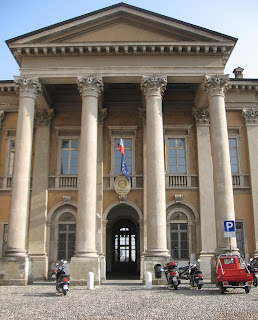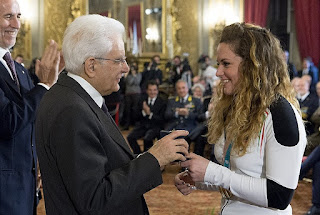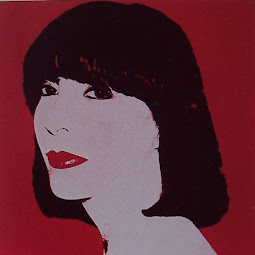 |
Giacomo Quarenghi was born
in a village not far from Lecco |
The
architect Giacomo Antonio Domenico Quarenghi, known for his work in Italy and
in St Petersburg in Russia in the late 18th and early 19th centuries, was born
in 1744 in Rota d’Imagna, a village in Lombardy about 25km (16 miles) northwest
of Bergamo, near the lakeside town of Lecco.
Quarenghi’s
simple, yet imposing, Neoclassical buildings, which often featured an elegant
central portico with pillars and pediment, were inspired by the work of the
architect, Andrea Palladio.
As a
young man, Quarenghi was allowed to study painting in Bergamo despite his
parents’ hopes that he would follow a career in law or the church. He travelled
widely through Italy, staying in Vicenza, Verona, Mantua and Venice in the
north and venturing south to make drawings of the Greek temples at Paestum
before arriving in Rome in 1763. His first focus was on painting, but he was
later introduced to architecture by Paolo Posi.
His
biggest inspiration came from reading Andrea Palladio's Quattro Libri
d'archittetura, after which he moved away from painting to concentrate on the
design of buildings.
He
returned to Venice to study Palladio and came to meet a British peer who was
passing through Venice on the Grand Tour. It was through him that Quarenghi was
commissioned to work in England, where his projects included an altar for the
private Roman Catholic chapel of Henry Arundell at New Wardour Castle.
His first
major commission in Italy (1771–7) was for the internal reconstruction of the
monastery of Santa Scholastica at Subiaco, just outside Rome, where he was also
asked to design a decor for a Music Room in the Campidoglio. He drew up designs
for the tomb of Pope Clement XIII, but these were later executed by Antonio
Canova.
 |
The Russian Academy of Science is based at
one of Quarenghi's St Petersburg palaces |
In 1779
he was selected by the Prussian-born Count Rieffenstein, who had been
commissioned by Catherine II, also known as Catherine the Great, to send her
two Italian architects. Quarenghi, then 35, was finding it hard to
generate enough work amid fierce competition in Italy, so he accepted the offer
without hesitation, leaving immediately for St Petersburg, taking his pregnant
wife with him.
Quarenghi's
first important commission in Russia was the magnificent English Palace in
Peterhof, just outside St Petersburg, which sadly was blown up by the Germans
during World War II and was later demolished by the Soviet government.
In 1783
Quarenghi settled with his family in Tsarskoe Selo, the town which was the
former seat of the Russian royal family, where he would supervise the
construction of the Alexander Palace.
Soon
afterwards, he was appointed Catherine II's court architect and went on to
produce a large number of designs for the Empress and her successors and
members of her court, as well as interior decorations and elaborate ornate
gardens.
His
extensive work in St Petersburg between 1782 and 1816 included the Hermitage
Theatre, one of the first buildings in Russia in the Palladian style, the
Bourse and the State Bank, St. George’s Hall in the Winter Palace (1786–95),
several bridges on the Neva, and a number of academic structures including the
Academy of Sciences, on the University Embankment.
 |
Rota d'Imagna is a beautiful village in the
Lombardy countryside 25km from Bergamo |
Quarenghi’s
design for the Hermitage Theatre in St Petersburg was heavily influenced by his
visit to the Teatro Olimpico in Vicenza as he toured Italy as a young man. The
theatre, constructed between 1580 and 1585, was the final design by Andrea
Palladio and was not completed until after his death. The trompe-l'œil onstage
scenery, designed by Vincenzo Scamozzi, gives the appearance of long streets
receding to a distant horizon. The theatre is one of only three Renaissance
theatres still in existence.
His work
outside St Petersburg included a cathedral in Ukraine and among his buildings
in Moscow were a theatre hall in the Ostankino Palace. He was also responsible
for the reconstruction of some buildings around Red Square in Moscow in
neo-Palladian style.
He
obviously never forgot his northern Italian roots because he showed his appreciation for
Catherine II’s patronage by giving her a case of Bergamo’s prestigious wine,
Moscato di Scanzo.
The
grapes for this rich, ruby red wine are grown in vineyards in a small, area of
countryside just outside Bergamo, land that is about 31 hectares wide only.
This is the only territory where the grapes can be grown for Moscato di Scanzo.
A wine
that has earned the title Denominazione di Origine Controllata e Garantita
(DOCG), the highest grade given to a wine in Italy, Moscato di Scanzo is made
from grapes harvested solely from the fields around Scanzorosciate, a town
about six kilometres (four miles) to the northeast of Bergamo in the foothills
of the southern Alps.
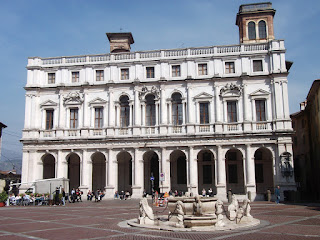 |
The Biblioteca Angelo Mai in Bergamo has
a collection of Quarenghi's designs |
But Quarenghi
was less popular with Catherine II’s son and successor, the Emperor Paul,
although he enjoyed a resurgence of popularity under Alexander I. When the
famous architect returned to Italy from time to time he always received an
enthusiastic welcome.
Quarenghi
retired in 1808 but remained in Russia, even though most of his 13 children by
his two wives chose to return to Italy.
He was granted Russian nobility and the Order of St. Vladimir of the First Degree
in 1814. He died in Saint Petersburg at the age of 72.
Rota
d’Imagna, Quarenghi’s birthplace, is situated in the Imagna Valley, a popular
tourist spot because of its largely unspoilt landscape and spectacular mountain
views, with many visitors attracted to trekking, mountain walks and horse
riding. In the village itself, the Church of Rota Fuori, dedicated to San Siro,
which was built in 1496 and restructured in 1765, has art works of significance
by Gaetano Peverada, Pier Francesco Mazzucchelli and Carlo Ceresa.
Quarenghi’s home was Ca’ Piatone, a palace built in the 17th century.
Bergamo
remembered him by naming a street Via Giacomo Quarenghi in the Citta Bassa.
Also, in 2017 the city marked the 200th anniversary of his death with a
programme of events to honour him.
In Piazza
Vecchia in the Città Alta, the library, La Biblioteca Civica Angelo Mai, has a
collection of 750 architectural designs by Giacomo Quarenghi. These are
available to the public on a DVD with texts in Italian or in English.
.jpg)


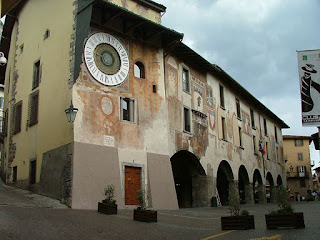
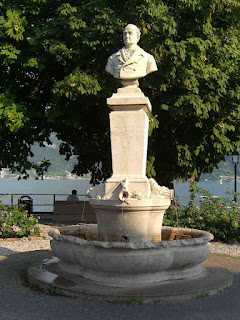
.jpg)
.jpg)
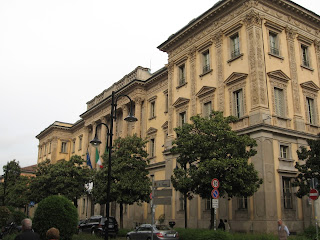


.PNG)

.jpg)

